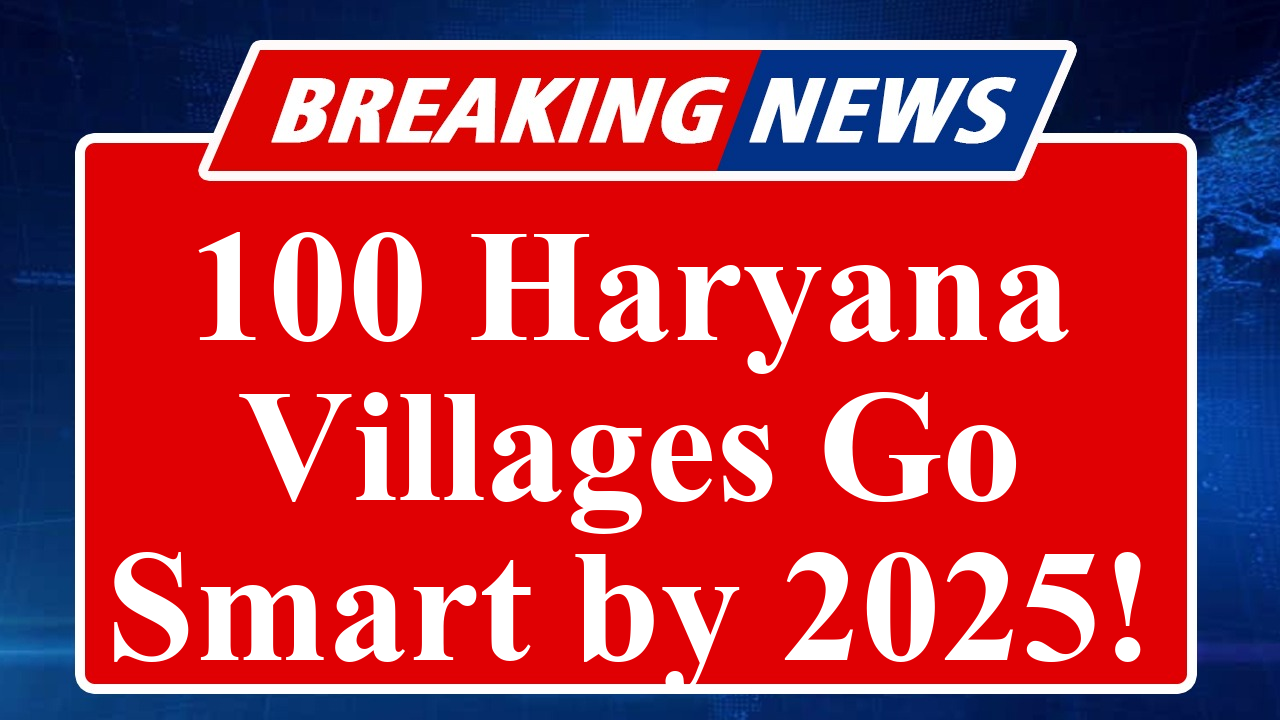Haryana’s Smart Village Yojana aims to transform 100 villages by June 2025, focusing on holistic rural development through advanced infrastructure, sustainable practices, and technology integration. The initiative, inspired by Mahatma Gandhi’s vision of self-reliant villages, will enhance education, healthcare, and economic opportunities, empowering rural communities with modern amenities and governance.
Haryana Launches Ambitious Plan to Develop 100 Smart Villages
In a significant push towards rural transformation, the Haryana government has rolled out the Smart Village Yojana, targeting the development of 100 villages into model villages by June 2025. This initiative, rooted in Mahatma Gandhi’s vision of Adarsh Gram (Ideal Village) and Gram Swaraj (village self-reliance), seeks to bridge the urban-rural divide by integrating advanced infrastructure, sustainable practices, and technology-driven governance.
The Smart Village Yojana builds on the framework of the Sansad Adarsh Gram Yojana (SAGY), launched by Prime Minister Narendra Modi in 2014, which encouraged Members of Parliament to adopt and develop rural villages. Haryana’s adaptation of this concept focuses on a multipronged approach, encompassing personal, human, social, and economic development. The selected villages will undergo comprehensive upgrades, including improved access to education, healthcare, clean water, sanitation, and renewable energy sources.
A key feature of the program is the integration of smart technologies. The government plans to deploy high-speed internet connectivity, enabling digital governance and access to online services such as education platforms, telemedicine, and e-commerce for local artisans and farmers. This aligns with the broader Digital India initiative, ensuring that rural communities are not left behind in the digital age. Additionally, the scheme emphasizes climate-smart agriculture, with micro-irrigation systems being implemented to boost crop yields while conserving water, a critical need in a state where 3,041 villages face groundwater stress.
The Haryana government has allocated substantial funds to support the initiative, drawing from central schemes like the Pradhan Mantri Awas Yojana-Grameen (PMAY-G) and the Svamitva Scheme. Under PMAY-G, poor families in these villages will receive pucca houses, with over 1.58 lakh applicants already receiving entitlement letters for 100-square-yard plots. The Svamitva Scheme, which uses drone technology to map rural properties, has finalized maps for 265,893 villages nationwide, including several in Haryana, to reduce property disputes and enhance financial liquidity.
To ensure effective implementation, the state has introduced the Gram Sanrakshak Yojana, where Class-I gazetted officers monitor development activities in adopted villages. Chief Minister Manohar Lal Khattar has urged these officers to engage directly with villagers to prioritize local needs, fostering a participatory approach. Furthermore, the initiative includes community-driven committees in each village to decide development priorities, ensuring grassroots involvement.
The Smart Village Yojana also incorporates renewable energy projects, such as the PM Surya Ghar Muft Bijli Yojana, with 14 villages in Rewari district competing to become model solar villages. This focus on sustainability extends to water conservation, with plans to construct on-farm water tanks and expand micro-irrigation to 2.5 lakh acres by 2025. These efforts aim to address Haryana’s water scarcity challenges while promoting agricultural resilience.
The scheme’s holistic approach includes skill development programs to enhance employability, particularly among rural youth, and infrastructure upgrades like all-weather roads and sanitation facilities. By fostering economic self-reliance and improving quality of life, the Smart Village Yojana aims to set a benchmark for rural development across India.
Disclaimer: This article is based on information from government announcements, news reports, and web sources as of July 6, 2025. Data and plans may evolve, and readers are advised to verify details through official channels.

